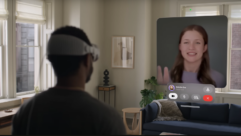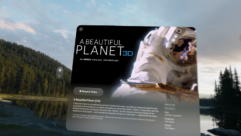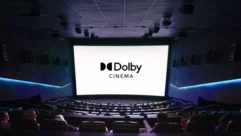

Greening Takes Vision
What a roller coaster ride. The American public’s fickle affection for renewable resources, sustainable energy, alternative sources, and so on, wax and wane with the economy. Last summer, with the cost of oil over $140 a barrel and gas prices more than $4 per gallon, folks started to jettison their SUVs and began to ride the bus to work.
What a roller coaster ride. The American public’s fickle affection for renewable resources, sustainable energy, alternative sources, and so on, wax and wane with the economy. Last summer, with the cost of oil over $140 a barrel and gas prices more than $4 per gallon, folks started to jettison their SUVs and began to ride the bus to work.
Or to walk. Or to bike. Suddenly, being “green” was the most important thing on earth–right after saving money, it turns out.
Then came the fall. Oil prices dropped precipitously, and despite a recent spike, gas prices followed suit. Now there’s a surplus of Toyota Priuses in Los Angeles, and people are thinking twice about donating their SUVs to charity.
In the construction industry, the undulation has caused a closer examination of the cost of going green via LEED-certified projects. As the economy took a turn for the worse, the cost of being green became an issue, especially because green materials typically cost more.
Credit: Thom Mullins, CTS
Personal note: I think it’s clear from the data available that we must begin to think long-term not only about alternative energy sources but about our commitment to developing those sources, our deployment of solutions, and being good stewards of the earth. Why? Because we live in a finite world with finite resources.
For too long we’ve operated as if resources were infinite. Now we’re finding out how wrong we’ve been. The discovery of fossil fuels and how to develop them are, I believe, just a bridge that will lead to ways of obtaining and utilizing other available energy resources. If we take the long view and eschew quick profits, we can provide solutions that will lead us beyond the end of the bridge.
Professional AV’s Role in Green
What does this have to do with our industry? Because of the popularity of the systems we provide, we have the ability to influence decisions in the built environment that can help our clients today and in the future.
The AV industry can impact not just system controls, but building controls. We can contribute to reducing the need for extensive travel through the proper design, implementation, and use of meeting technologies such as teleconferencing and telepresence. We can help our clients–architects and building owners–construct and operate buildings that are sustainable.
However, we have hurdles to overcome. Here are some examples:
Scott Walker, CTS-D, of Waveguide Consulting in Atlanta, has been working to get the U.S. Green Building Council to include some dedicated LEED credits that AV systems and AV controls systems can address. Unfortunately, he has met with limited success. He and Tony Warner, CTS-D, of architecture firm RTKL, spent a long weekend writing a credit around the use of videoconferencing. Turns out it was one of almost 9,000 credits written for potential inclusion in the next version of LEED.
It now appears that the best route to obtain recognition for such a credit is to find a project that would naturally benefit and get the architect and USGBC to approve it as an innovation credit. After all, it’s possible to get credit just for having a LEED-certified design professional on the team; videoconferencing should be worth at least that much. Scott wrote recently that the use of such technology in the design process should be considered for a credit as well.
Dan Bruck, president of BRC Acoustics (and my boss), found himself in a similar situation two years ago. Having surveyed the existing version of LEED, he found it sadly lacking in anything relating to acoustical issues in the work environment. After he earned his LEED certification, he began badgering USGBC and found himself at the head of a committee.
Now, two years on, there will be some limited acoustical credits available in the next version of LEED. His persistence also paid off in papers presented at last year’s Acoustical Society of America conference, and it’s touching other areas where scant attention has been paid to acoustical issues, namely education and health care.
Dan made another confusing discovery. One would think it makes sense to construct the most sustainable building possible, i.e., go for all the LEED points you can. However, implementation, verification, and certification of a LEED facility carry costs. Once an owner and the design team have made the decision to try for LEED certification, it becomes a zero-sum game.
If you, as part of a team, propose new credits that would push a project out of gold certification and into platinum, for instance, the architect will often ask what other credits might be impacted or set aside in order to make room for your proposal. That seems rather shortsighted and contrary to sustainable design.
Getting into Building Control
Others in the AV industry are working to modify equipment to comply with Energy Star requirements and to find ways to tie room control systems to facility direct digital control systems. The latter effort could help put the AV industry at the center of not just room control but also facility monitoring and control. Witness the deployment of AMX control systems in the Johnson Controls headquarters to handle their DDC systems. Impressive step.
We have a long way to go, and we don’t always know where the bridge will take us. We also have some tools at hand and enough vision that we can make it where we need to go. But it takes the long view. Focusing only on today won’t get us far.
The motto of the Boy Scouts is “Be Prepared.” When asked by a reporter what that meant, Lord Baden-Powell replied that a Scout should be prepared for “any old thing” that came along. The training a Scout receives helps him read the land ahead and gives him the confidence to move forward not knowing what he might encounter but understanding he can use what’s in his pack to get him to his destination.
Greening the industries we work in will similarly take the ability to read a map, follow the terrain, invest in tools, and adapt to circumstances. Then we’ll reach our destination.
Thom Mullins is a senior consultant with BRC Acoustics & Technology Consulting in Seattle. See Pro AV’s new green AV-related column starting next month.










